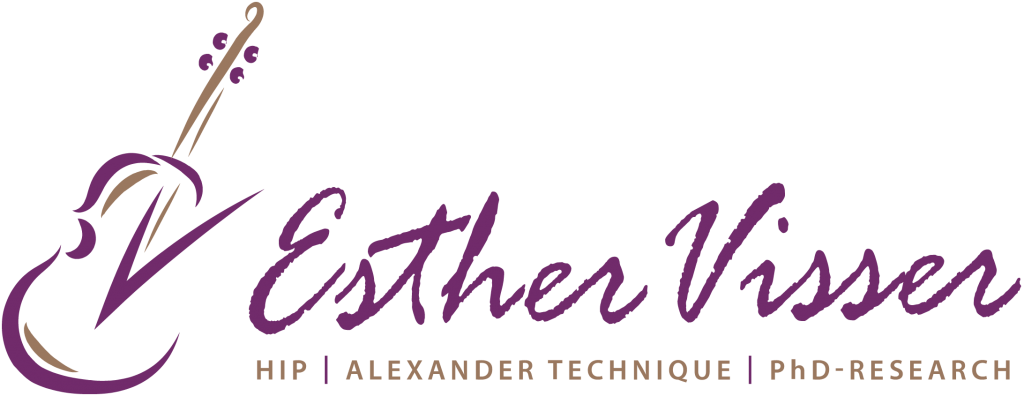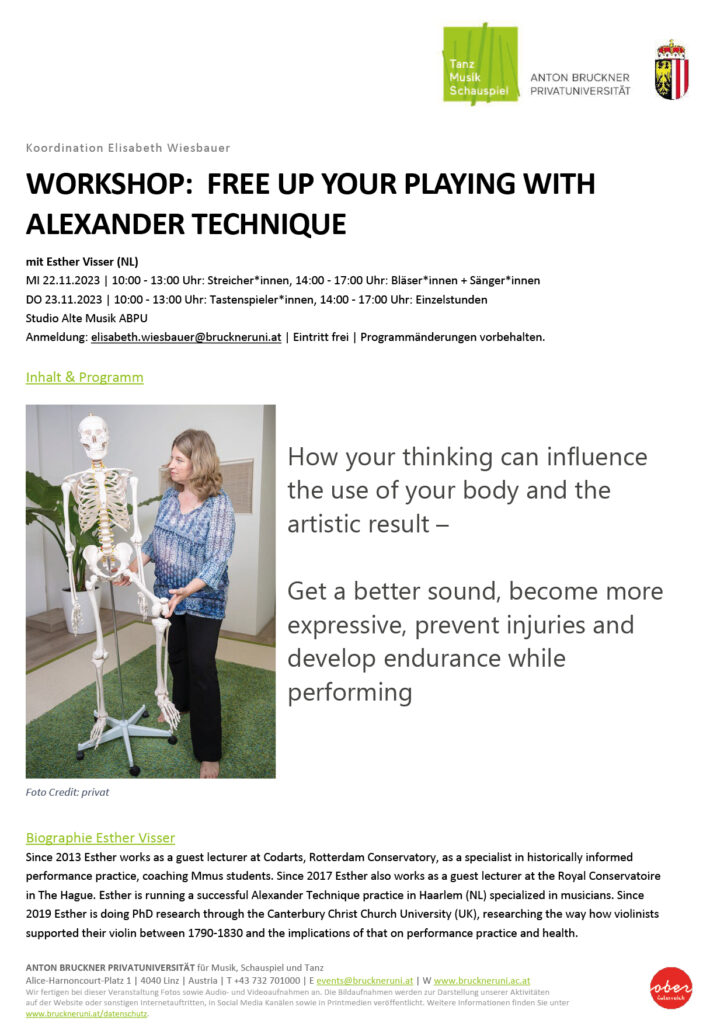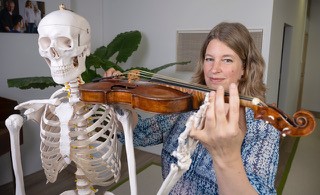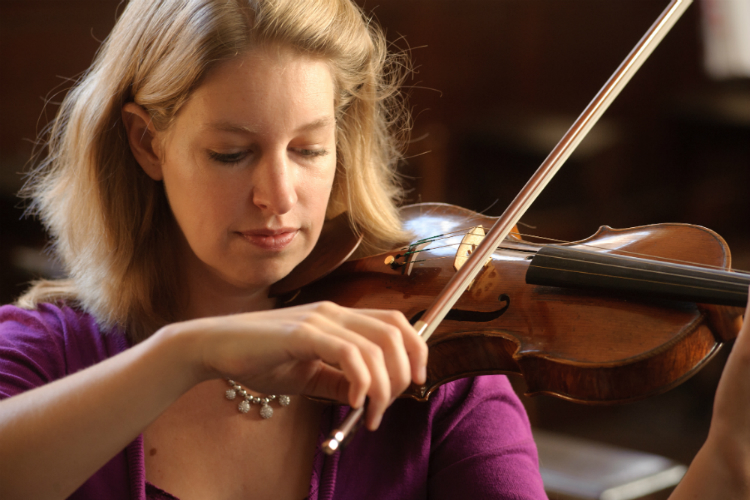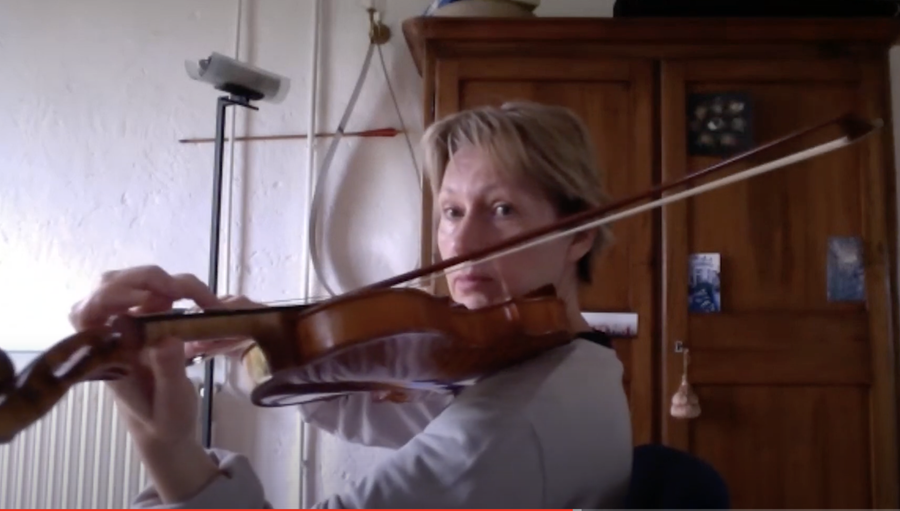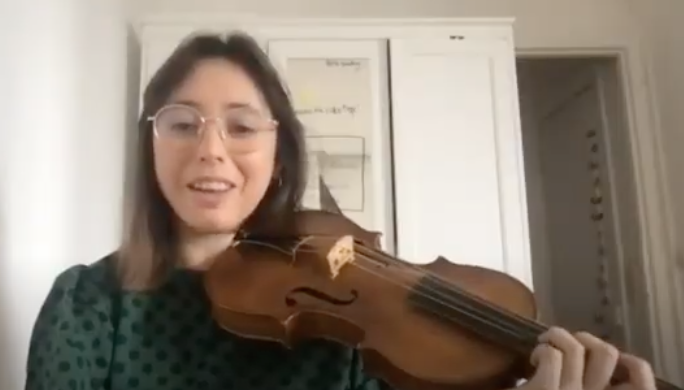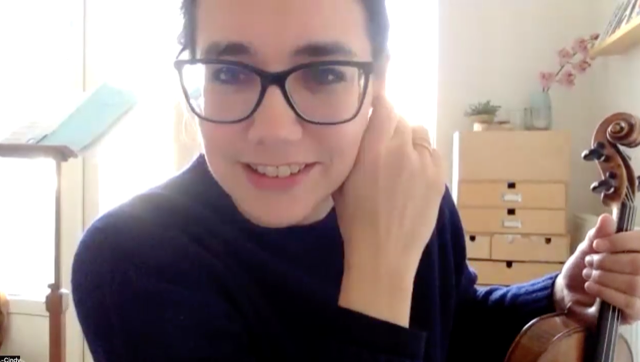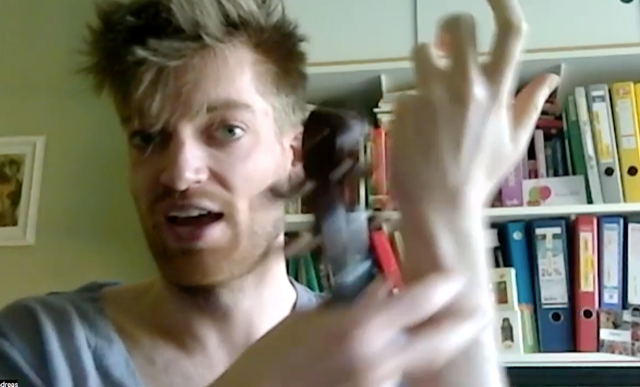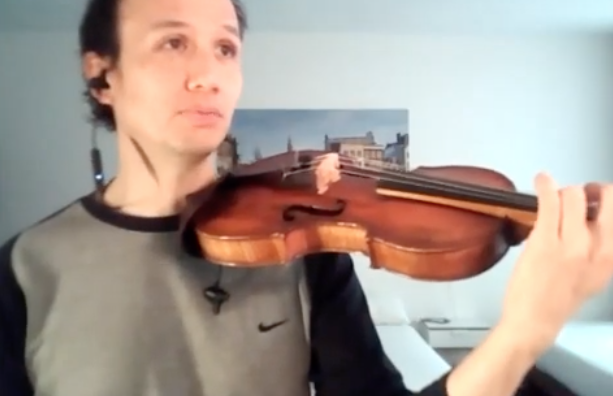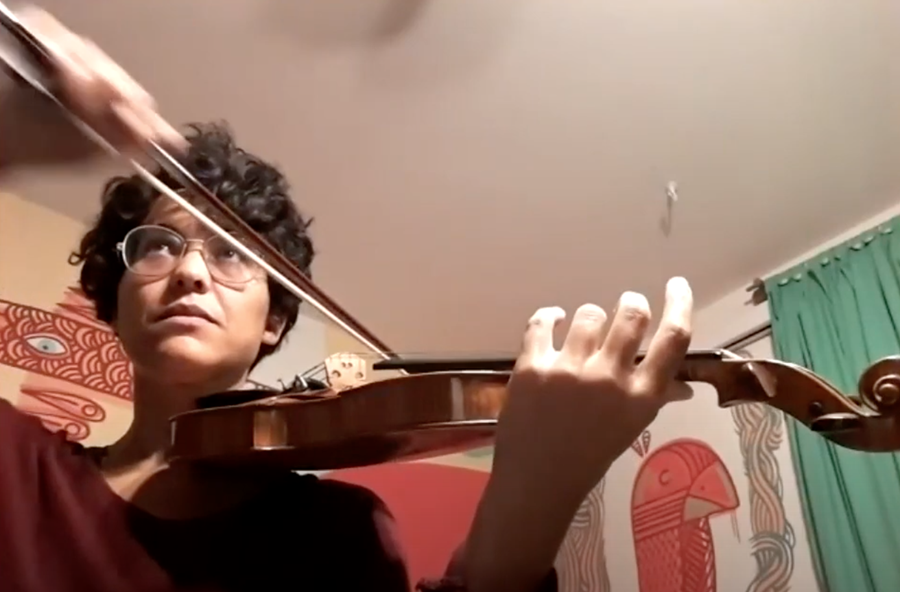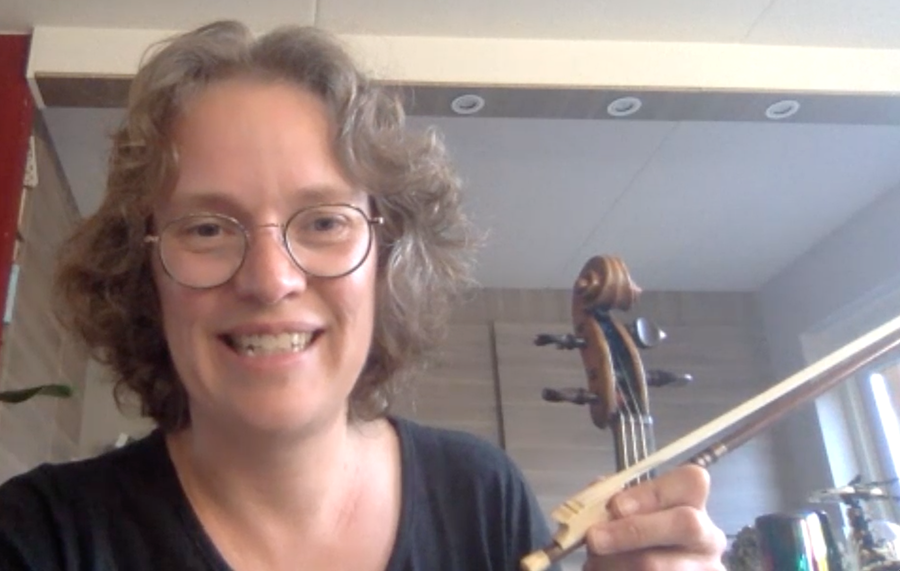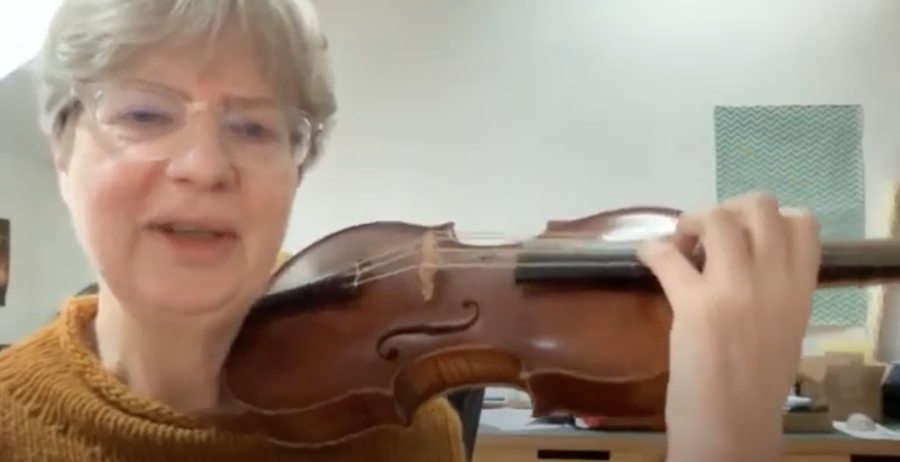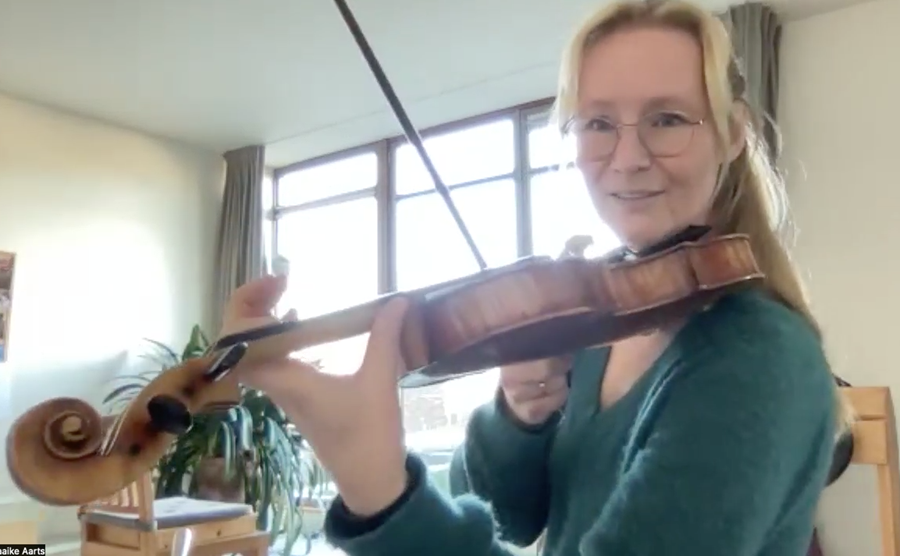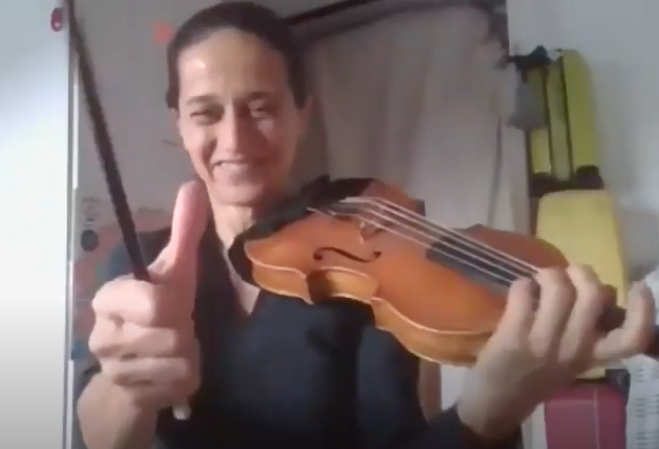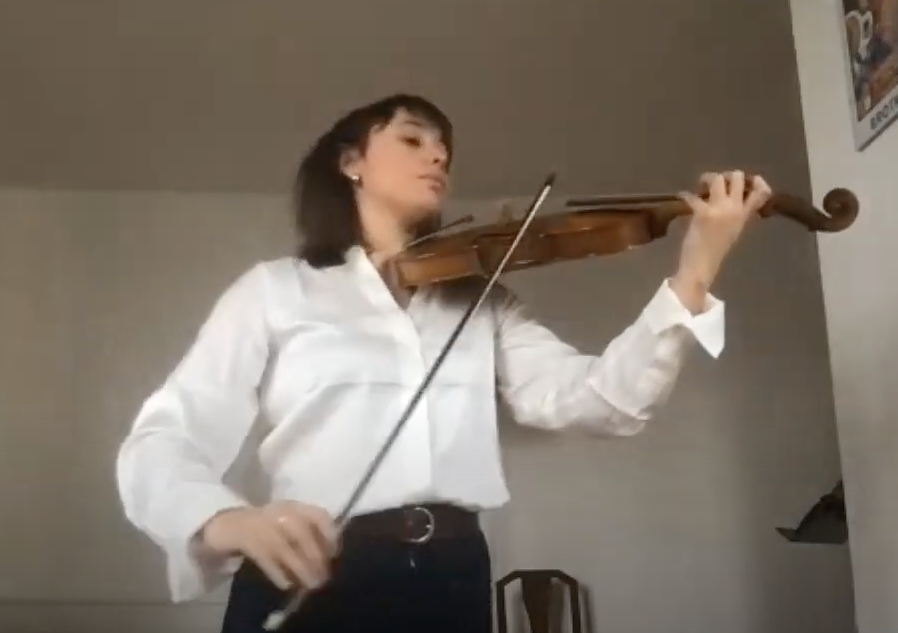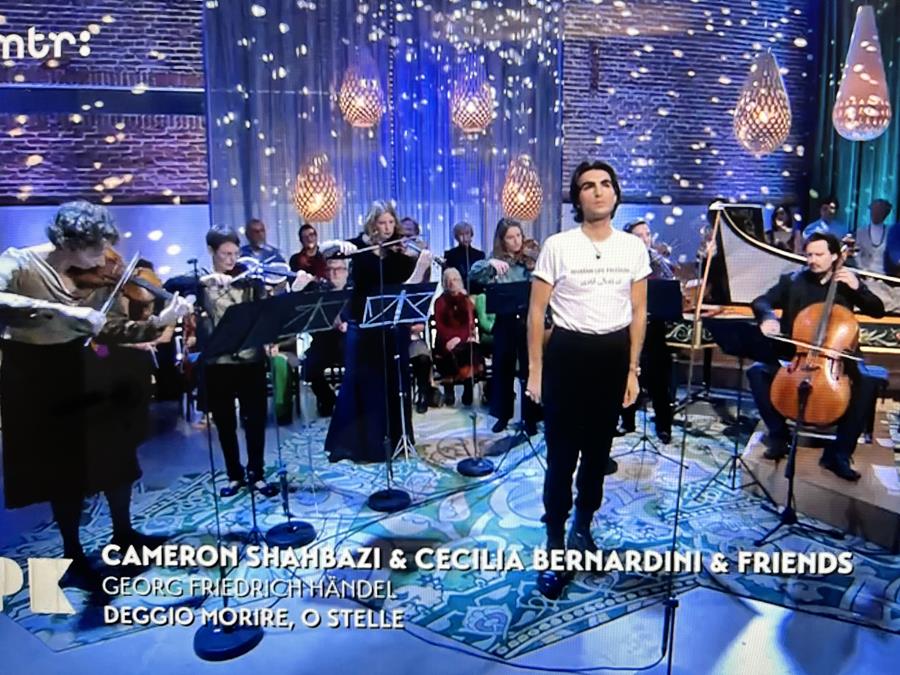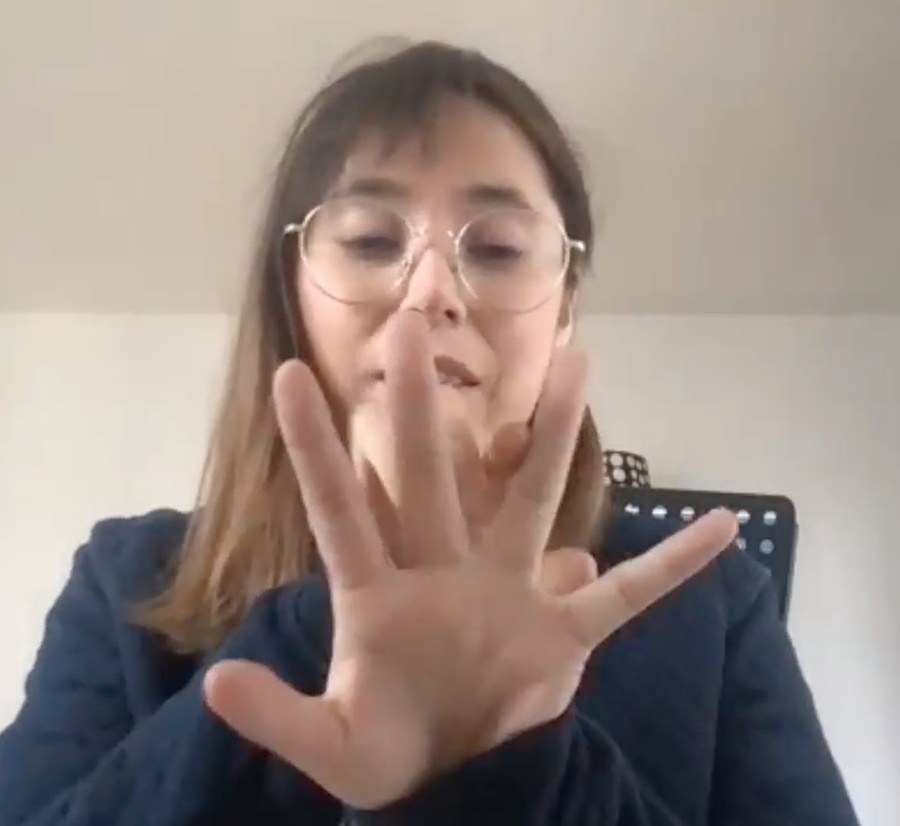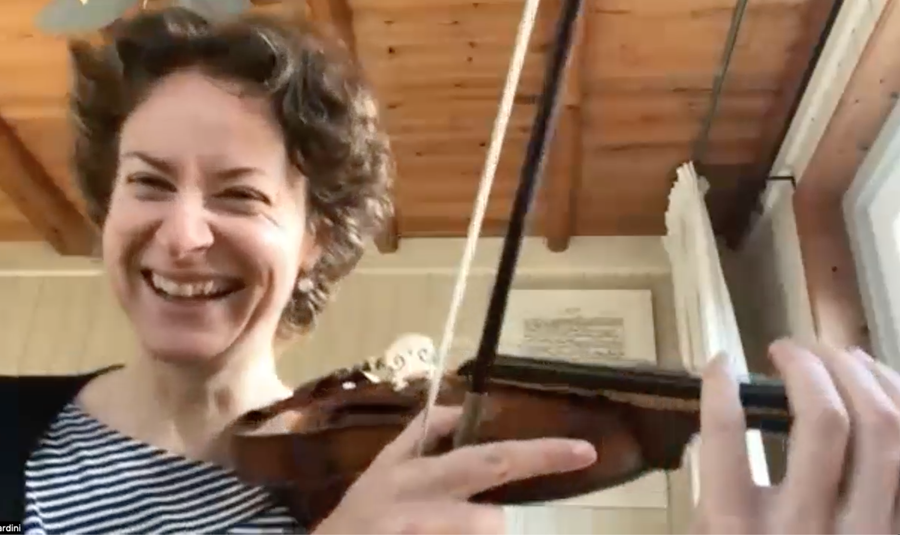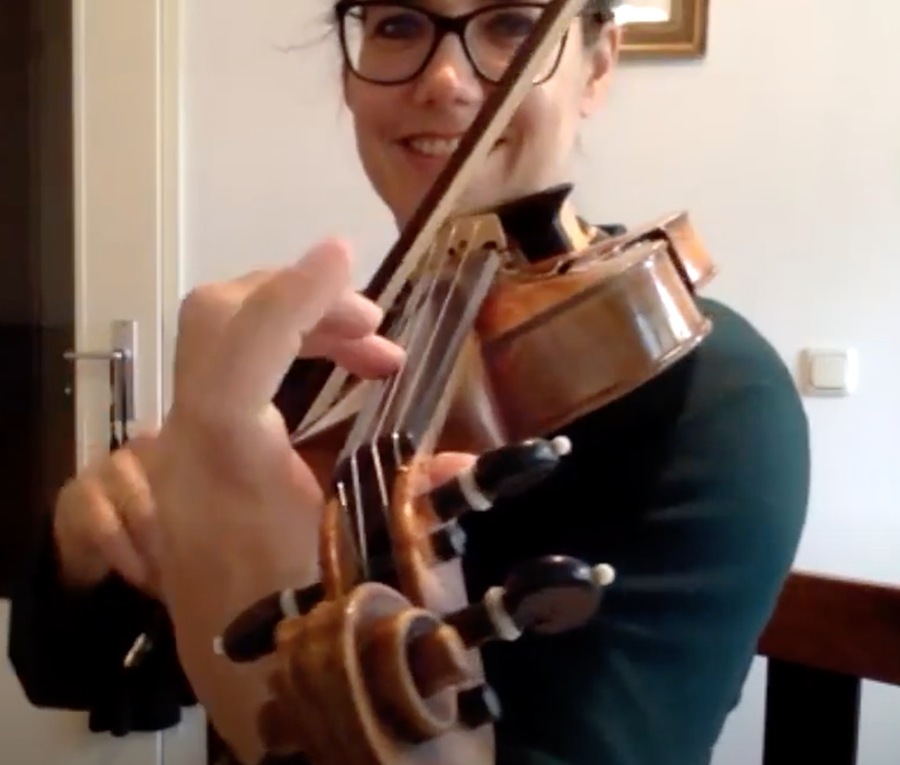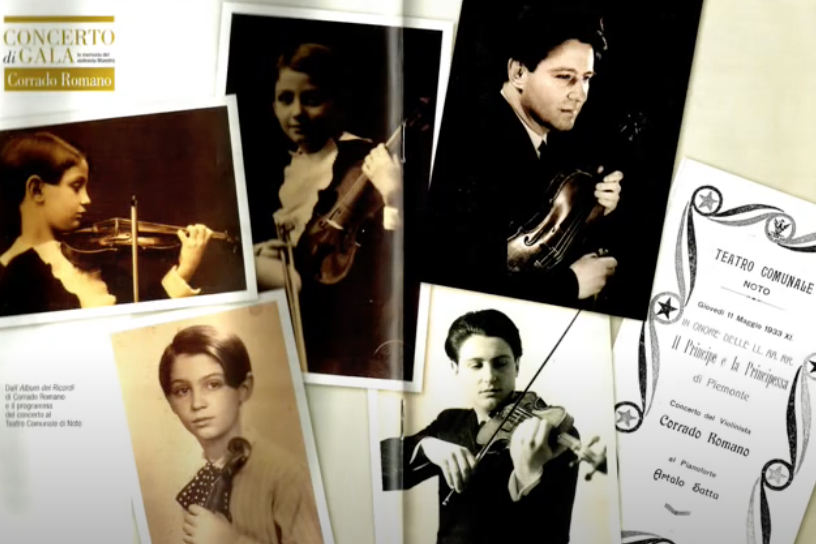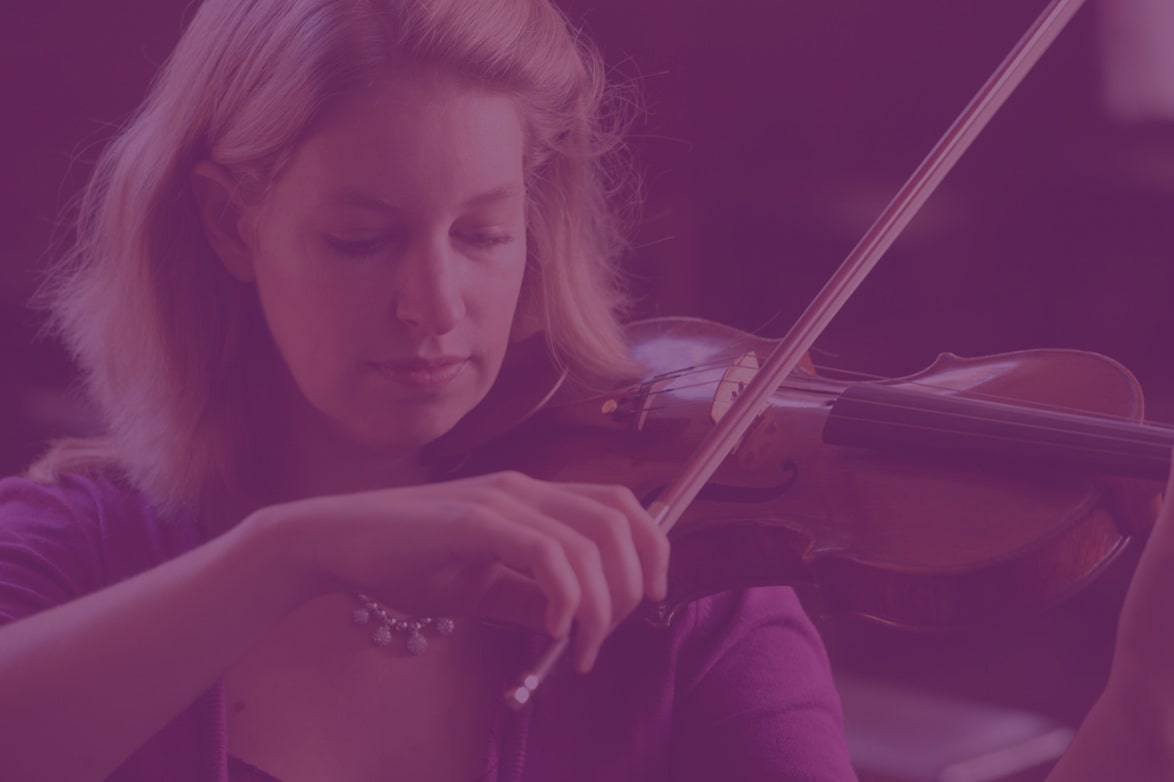
Research
Hi everyone,
The first week of my experiment on playing without a shoulder rest and / or chin rest is almost finished. Here are some updates and some feedback.
It was really touching to receive your first videos and to see people take my instructions so seriously. I feel grateful and excited. In the mean time, over 100 (!) musicians signed up to participate and 77 filled out the entrance survey. That is really great! If you know more people who like to join, this is still possible through my website. If you just signed up in the last days: Welcome!
In this newsletter I have a few requests for you and I will give some feedback on what I saw in the videos. If you missed my first newsletter last week, you can still read it here. There is a collection of these newsletters at my website available too.
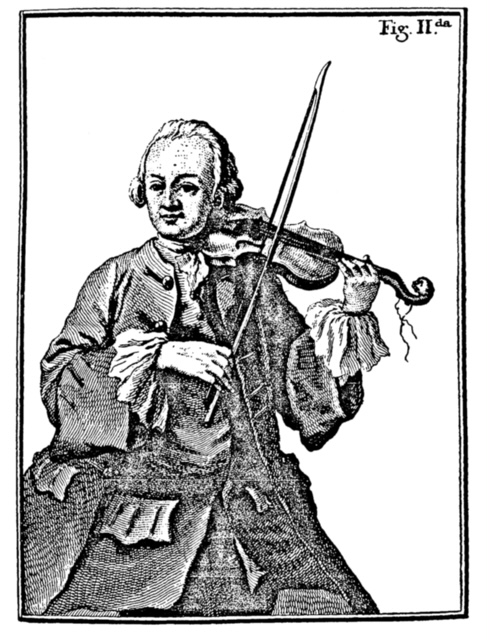
A few requests
1. Around 25 people are planning to take part in the experiment, but did not yet fill out the entrance survey. Its no problem if you start the lessons a bit later, but could you please fill out the survey so that I know that you will actively taking part? Thanks!
2. Not yet from all people who filled out the entrance survey did also sent me their video about lesson 1 in the last week. Maybe you are still planning to do that this weekend? Maybe you just registered, or maybe in your personal planning it’s better to start a few weeks later. That is completely fine! No problem! For me, it would be reassuring, if you just could send me a short message as a reply to this newsletter, about what your personal planning is. So I have an idea and I know I can still count on your participation. I hope to hear from you! You can upload your videos here.
3. Please don’t watch future lessons too early in the process. I value your curiosity, but I spoke with a few people who tried the exercises already and said they couldn’t do them… but of course that is: Because we didn’t prepare them enough yet! Even lesson 2 is hard if you didn’t take enough time for lesson 1. So please: Patience :-)…
4. If you usually use a cloth or anything under your violin or your chin, please do take this off during the exercises for this experiment. I would like to see if you can acquire this (balance) skill without the help of any artificial tool. Except if you are protecting the varnish of your instrument, but please don’t use it to have extra resistance between the wood and the skin for example. Thanks!
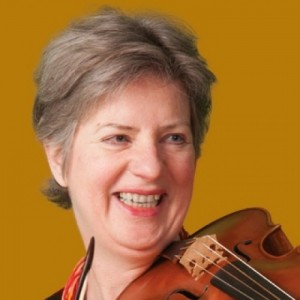
First zoom session
Last Wednesday, we had the first Zoom session with some participants of this experiment. It was a very nice experience and lovely to meet up. If you want to watch it: I recorded the session and there is a link to it in the log in page under the video lessons. There will be a list of all Zoom session, for those who are interested and could not attend.
What was really nice in this first session, was that Nicolette Moonen was taking part! She is baroque violin teacher at the Royal Academy of Music in London and Feldenkrais teacher as well. We talked about the starting days of playing and teaching baroque violin in the 60ties and 70ties, when she started her career and we exchanged some interesting ideas about teaching at conservatories, Alexander Technique, Feldenkrais and supporting the violin. I feel honoured that she is taking part in this experiment. Irma Niskanen was joining too, who is teaching baroque violin as a second subject at the Musik Hochschule in Vienna and who studied herself in the Sibelius Academy. It was very interesting to hear her approach in teaching playing without shoulder rest and chin rest (if they like) to these talented violin students in Vienna, in an only two year curriculum, and we shared some ideas about that. Have a look if you are interested! Hope to meet you next wednesday as well, there is plenty of space to ask questions and discuss everything around this experiment.
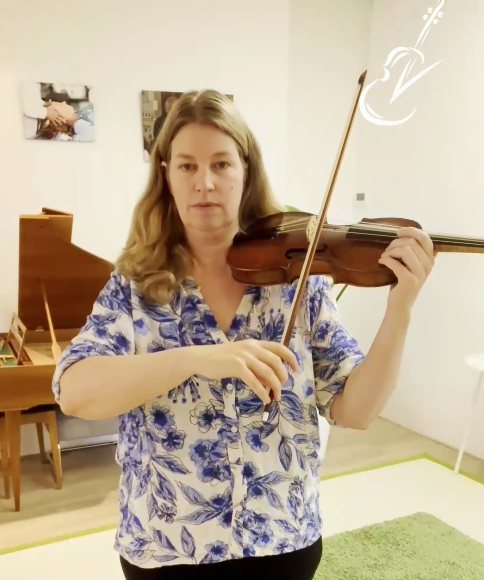
Feedback on the videos of lesson 1
Thank you so much for sending in your videos! For the people who did not upload them yet, I am looking forward to receive them soon.
The assessment was to find a comfortable spot to place your violin on the collarbone, a good direction for the violin, playing open strings with the left hand on the shoulder of the violin and not touch the violin with the chin, while checking the balance on your feet.
Well, this turned out not to be so easy… Especially for the people who have a modern violin background, I saw some people struggling with the tilt of the violin. While using a shoulder rest many violinists got used to an instrument with quite a bit of tilt and maybe they did that by purpose to reach the G string easier or believed that this would ‘project’ the sound more. It is very well possible that when you now play without a shoulder rest, your violin will end up to be placed in a flatter position (less tilt), depending on the features of your collarbone. If you keep the same tilt your were used to, the violin will slip forwards and you will be constantly working with the left arm to actively give this tilt to the violin. That is not what we want!
Yes, this flatter position will feel very strange in the beginning, but please give it a chance. My experience is that the sound will be only bigger (as the bow has more power in this position, deeper in the string, and your bones will resonate with the violin if you touch a bigger part of your collarbone) and your shoulder girdle will be more flexible which makes reaching the G string no problem at all. In the picture above, you see the tilt of my violin: it is quite flat, I think.
Take care that you use the middle part of your collarbone, not just a bit of it, and especially not somewhere at the beginning or end of the bone. If you use a too small part of it, it gets a lot of pressure and the skin will get red and painful. Also take care that you don’t let your violin point too much to the left, use the test with the arms I explained in the video to check the direction of your violin. If you bring it a bit more forwards, the middle part of your violin will rest on the middle part of the collar bone, in stead of just a small part of the violin base. It is very important to have that sorted out before you start the second lesson, in which we balance the violin on the thumb. The contact with the collarbone should feel stable and safe. Even after playing for 6 hours a day, my skin never gets red under the violin, I think the pressure can be very light if your balance is nice.
I was very happy that on all videos I received, no one’s shoulder was touching the violin. Well done! 🙂
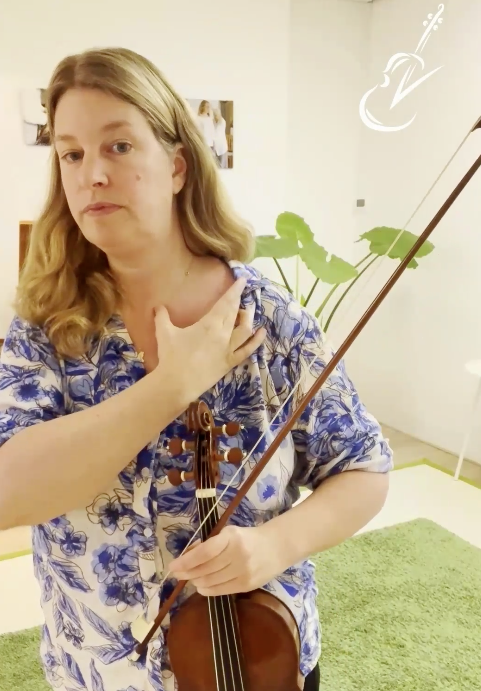
Some remarks for lesson 2
As some of you are now starting lesson 2, I like to explain a few things. When you balance your violin for the first time only on your thumb, this will probably create some tension in your hand and arm, as you are not used to this and you did not yet develop the skill to balance the violin in this way. It’s like with riding the bike for the first time: you will squeeze the bike and tense all you muscles as you are afraid to fall and you need to work hard to keep the balance. This is normal.
After a while, this gets much easier and nowadays you probably don’t even think about your balance while on the bike and you sit there relaxed. This is the same. After a few days of practising, this balance becomes much more easy and muscle tension disappears, but you need to train. So please don’t give up after a the first time of trying. It comes with practising and doing it more often, like with juggling balls or with tightrope walking. Exactly the same!
If you notice that you violin is ‘wobbling’ a bit, by the movement of the bow: That is normal in this exercise! You will see it also happening with me in the video. Later on (in lesson 3) we will put the fingers on the strings, which will give much more stability. For example in playing tremolo the violin will stay still, don’t worry. The goal is to develop this delicate balance of the violin on your thumb first, as a basis, so that we can add the fingers to that in lesson 3, which will make everything easier.
Best regards, please let me know if you have questions,
Esther Visser

